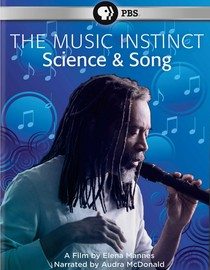The other day, I stumbled upon “Music Instinct: Science and Song” a great PBS documentary filled with musical celebrities the likes of Daniel Bernard Roumain, Bobby McFerrin, Audra McDonald, and Yo-Yo Ma. According to the Netflix description, “Art and science intersect as leading researchers and prominent musicians reveal surprising connections between music, the brain, the body and human evolution.”

While watching the film one of the neuroscientists was describing the feeling of goose bumps as “frissle.” Spurred by curiosity, I found that the actual medical/scientific term for goose bumps is “piloerection.” Great word, no? Ruth McCaffrey, in an article for Holistic Nursing Practice Journal, writes, “A thrill with piloerection response or goose bumps has been noted when persons listen to different types of emotion-provoking music.”
The neuroscientist from the film had proven that “enharmonic changes” are usually responsible for emotion-provoking music causing most instances of piloerection. The Harvard Dictionary of Music describes enharmonic change as “the change of meaning of a tone or a chord (frequently a diminished seventh chord) from sharp to flat, or vice versa, as is frequently the case in modulations.” Why do people love the end of Barry Manilow songs? Modulations. It gets us all hot and bothered. In classical music the enharmonic change has been lovingly applied as early as Handel through to Verdi, Wagner, and modern composers today.
Do you have a favorite enharmonic change musical moment? I want to know about it. Drop me a line…

[…] This post was mentioned on Twitter by Neuro Now. Neuro Now said: Hot Musical Vocabulary: Piloerection: The other day, I stumbled upon “Music Instinct: Science and Song” a great PB… http://bit.ly/dAgU2l […]